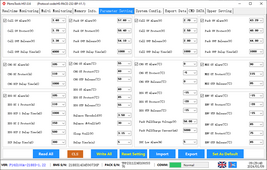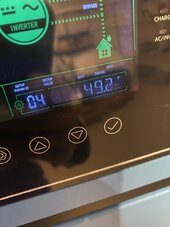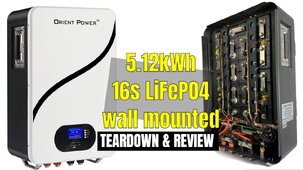SGP 10kw with two SGP rack batteries. Menu item 12 (Battery Overdischarge voltage). Manually set to 48.0 with the BMS input disconnected. When I connect the BMS it goes to 0. When I reconnect the BMS it stays at 0. The BMS is reporting Discharge Voltage Limit = 43.20 to the inverter but that is not what the inverter is seeing. Ran the same test with my six EG4 batteries. 12 went to 0 with the EG4 BMS connected and did not return to the 48.0 volts I manually set when the BMS is disconnected.
Just fired off an emasil to SGP.
The inverter continuously sends these three commands to the Master battery:
CID2: 0x62 - System Alarm Information: 0x62
CID2: 0x63 - System Charge/Discharge Management Info: 0x63
CID2: 0x61 - System Analog Data: 0x61
This is what I am seeing being sent back to the inverter from the SGP Master battery (keep in mind the batteries are as I received them a week ago, They are in a rack in my computer room and have not been charged since I received them hence the low SOC). The items that end with "Text" are the textual meaning for the number above them and are not sent to the inverter
2024-01-08 21:50:46 TX->:
Valid Packet: True
Version: 20H 32-30
Address: 18 0x12
CID1: 0x46
CID2: 0x62 - System Alarm Information: 0x62
Info Length: 0
Info Data
Command: 7E-32-30-31-32-34-36-36-32-30-30-30-30-46-44-41-39-0D
Sent To Inverter: CID2: 0x62
Description: System Alarm Information
Alarm 1 Value: 0
Alarm 2 Value: 0
Protection 1 Value: 0
Protection 2 Value: 0
Alarm 1 Text:
Alarm 2 Text:
Protection 1 Text:
Protection 2 Text:
2024-01-08 21:50:47 TX->:
Valid Packet: True
Version: 20H 32-30
Address: 18 0x12
CID1: 0x46
CID2: 0x63 - System Charge/Discharge Management Info: 0x63
Info Length: 0
Info Data
Command: 7E-32-30-31-32-34-36-36-33-30-30-30-30-46-44-41-38-0D
Sent To Inverter: CID2: 0x63
Description: System Charge- DischargeManagement Info
Charge Voltage Limit: 56.40
Discharge Voltage Limit: 43.20
Charge Current Limit: 100.00
Discharge Current Limit: 200.00
Charge/Discharge Status (bit flags for below values): 192
Charge Enable Value: 0
Charge Enable Text: Normal
Discharge Enable Value: 0
Discharge Enable Text: Normal
Charge Immediately: 0
Charge Immediately Text: Normal
Full Charge Request: 0
Full Charge Text: Normal
2024-01-08 21:50:47 TX->:
Valid Packet: True
Version: 20H 32-30
Address: 18 0x12
CID1: 0x46
CID2: 0x61 - System Analog Data: 0x61
Info Length: 0
Info Data
Command: 7E-32-30-31-32-34-36-36-31-30-30-30-30-46-44-41-41-0D
Sent To Inverter: CID2: 0x61
Description: System Analog Data
Average Battery Voltage: 52.57
Total Current: 0.00
Average SOC: 43.00
Average Cycles: 1.00
Maximum Cycles: 1.00
Average SOH: 100.00
Minimumn SOH: 100.00
Max Cell Voltage: 3.29
Battery # Of Max Cell Voltage: 16
Min Cell Voltage: 3.29
Battery # Of Min Cell Voltage: 32
Average Cell Temp: 84.88
Max Cell Temp: 84.99
Battery # Of Max Temp: 6
Min Cell Temp: 84.83
Battery # Of Min Temp: 4
Average MOSFET Temp: 85.32
Max MOSFET Temp: 85.35
Battery Number Of Max MOSFET Temp: 2
Min MOSFET Temp: 85.28
Battery Number Of Min MOSFET Temp: 1
Average BMS Temp: 85.21
Max BMS Temp: 85.32
Battery Number Of Max BMS Temp: 2
Min BMS Temp: 85.10
Battery Number Of Min BMS Temp: 1
Note the "Pack UV Alarm(V)" setting of 43.20 which is what is being sent to the inverter (supposedly)









